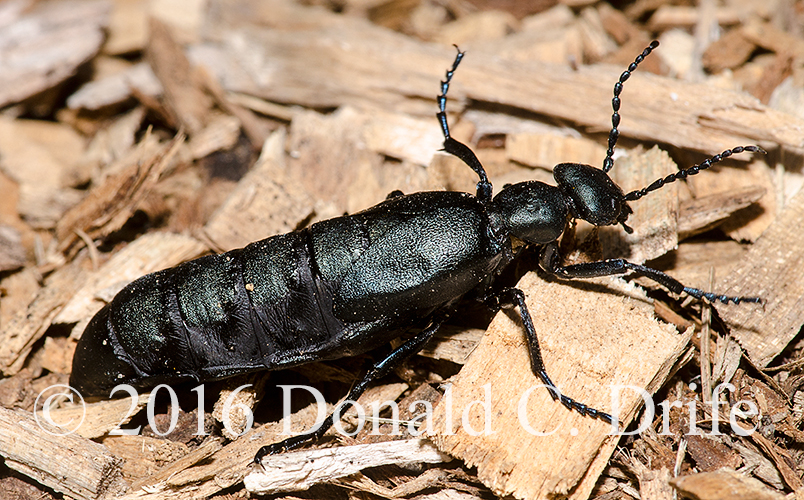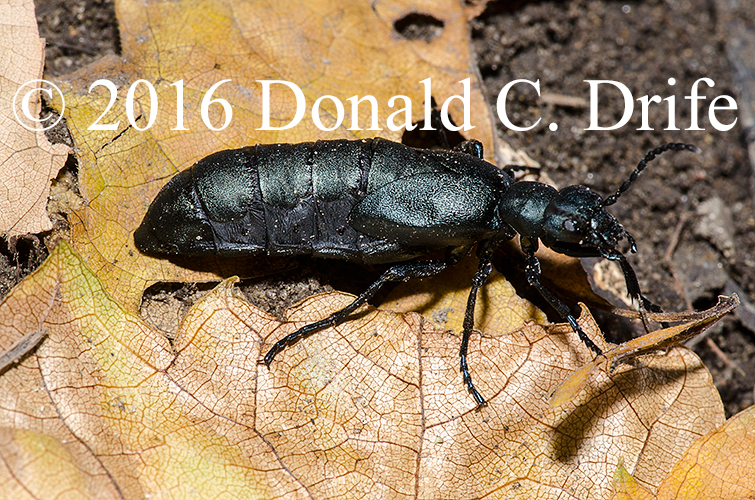 During a recent work session at the Royal Oak Arboretum one of the Boy Scouts found a large purplish-black beetle. It was part of the Blister Beetle group called an Oil Beetle (Meloe sp.). They exude an yellowish oily substance from the base of their legs that forms blisters if it contacts human skin. They placed the beetle in a large plastic cup and the cup’s bottom was spotted with oily liquid when I first saw it.
During a recent work session at the Royal Oak Arboretum one of the Boy Scouts found a large purplish-black beetle. It was part of the Blister Beetle group called an Oil Beetle (Meloe sp.). They exude an yellowish oily substance from the base of their legs that forms blisters if it contacts human skin. They placed the beetle in a large plastic cup and the cup’s bottom was spotted with oily liquid when I first saw it.
This genus consists of six species in the Northeastern United States. I am not sure which species this one is. I am happy to know the genus of an insect.
The females are about twice the size of the males. This female was 40mm [1.5 inches] long and seemed sluggish. They overwinter as eggs and perhaps she had laid her eggs and was reaching the end of her life. This is a flightless, parasitic beetle. The eggs hatch in the late spring and the larva are described as alligator-like. Climbing onto a flower they wait for one of the solitary bees to land and quickly latch on to its back. The Oil Beetle larva rides the bee back to its nest and feeds on the developing bee larva and possibly some of the pollen in the nest. It then pupates and emerges in the fall to mate and lay its eggs.
It is fun to find a new insect in an area that I visit often. You never know what you are going to see when you just get out and look.
Copyright 2016 by Donald Drife
Webpage Michigan Nature Guy
Follow MichiganNatureGuy on Facebook


I just found several of these Huge Bluster Beetles in an Elementary Schools playground where children were just a few feet away in the classroom!!
Should I take my pictures to the Principal make Him/Her aware of this? I’m worried that children may attempt to pick these ugly black bugs up and get sickened w/Blisters??
I don’t regard these insects as dangerous. They might have been laying eggs in the playground’s mulch. You can send your photos to the principal to make her aware of the insect. The beetles overwinter as eggs so the adults will disappear with cold weather. The larva of most species do not remain in the area where they hatch and pose no threat to humans.